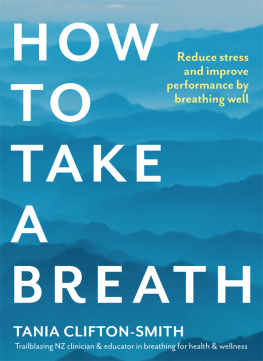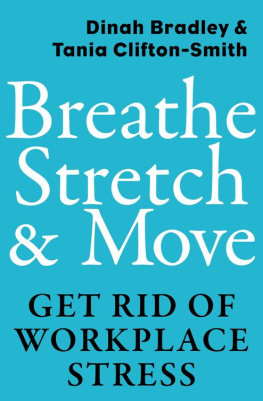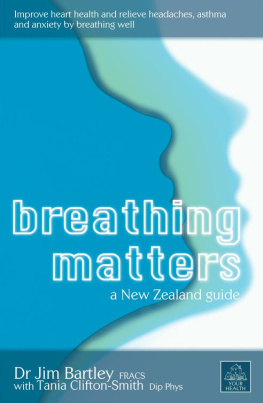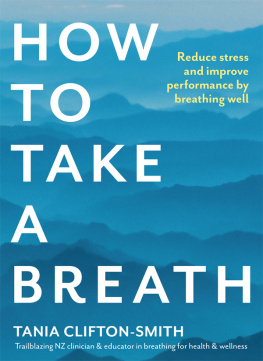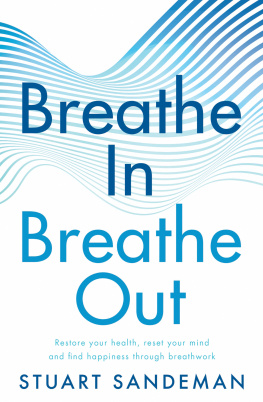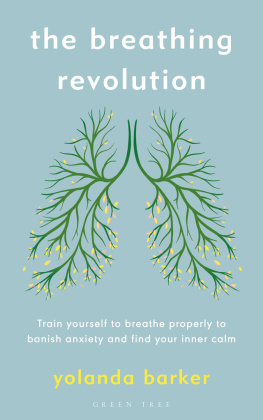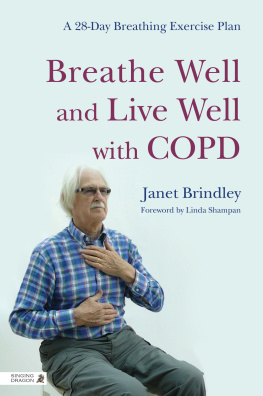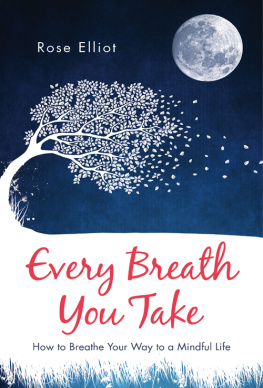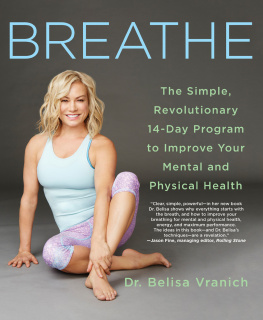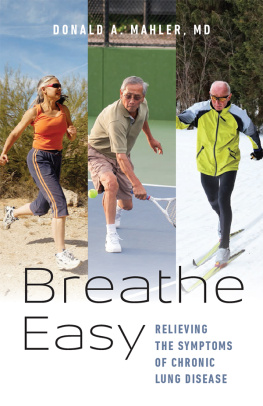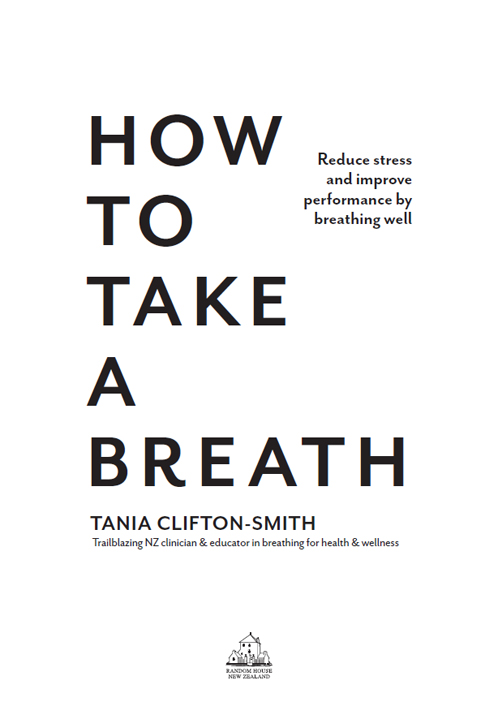many patients with thanks.
When in doubt, breathe out.
INTRODUCTION
THE NEED TO BREATHE
Over the last three decades my work in the field of breathing pattern disorders, breathing dysfunction and hyperventilation has been rich. My background training in physical education and physiotherapy has provided an ideal foundation for this field of practice and I have never stopped learning. My journey in this field began treating the literati, glitterati and high achievers at the top of their professions in London in the late 1980s. These clients had all been diagnosed with exhaustion, burnout and chronic hyperventilation syndrome (CHVS). Another wing of the practice was the treatment of survivors of torture. This group was also suffering from exhaustion and CHVS, but with added severe psychological trauma and pain. My learning curve was steep, challenging and stimulating, and I was hooked.
Working with both groups, as well as developing some unique therapeutic skills, I also gained priceless experience that covered the spectrum of what it is to be human. I also learnt that my background in physiotherapy and physical education was not enough for me to be able to understand and treat such conditions. There began my never-ending thirst for knowledge, honing of skills and people-contact in this field. One kind friend has even labelled me a self-confessed course-a-holic in the field of breathing!
Since then, my clinical practice has explored many aspects of breathing dysfunction. From the purely mechanical for example, mouth breathing in children, and back and neck pain driven by breathing pattern dysfunction to elite athletes who have postural breathing problems on a quest to move faster, to individuals with biochemical imbalances making them sensitive to all stressors as a result of having lower blood carbon dioxide levels than normal. Many fall into this common, silent, unknown category. Ive also sought to understand the bodys neuropsychophysiology, which affects thoughts and emotions and includes areas such as insomnia, panic attacks and overwhelming stress. One thing I know for sure is you cannot breathe well and be experiencing panic its physiologically impossible.
Most people dont know that breathing is also connected with movement, sleep, bowel motions, feelings, thoughts, general health and performance, and voice control. There is more to breathing than just breathing in and breathing out. Breathing is the first step to overall health, movement and well-being.
So, why this book and why now? Because I dont believe the message of the importance of breathing well is being heard. Breathing well has a profound effect on health and well-being and it is not as simple as some would like to imagine. Breathing is complex. There are many things that affect the way we breathe, and the way we breathe will affect many things.
Generalised breathing protocols do not fit everyone, especially if there is some dysfunction. Those people need an individualised, tailor-made programme. However, there are general principles that apply to many people if they know what to look for. It is these simple principles I plan to outline in this book. The rest is best left to the medical experts in this field.
A word of caution: if youre trying the exercises suggested in this book and theyre not working or you feel worse, please see a medical professional.
In todays society, pressure is paramount, change is inevitable, and the speed and volume of communication is only going to increase. Those with the tools, resilience and the ability to adapt will thrive. Those without, will not. Its as simple as that.
As a clinician, I am deeply passionate about the importance of breathing well and still see it as an untapped tool that everyone has immediate access to, which will help improve health and well-being. Breathing is the most fundamental function to help regulate many systems. Its a key to better self-understanding. We can tune into it anywhere and anytime, and it is drug-free.
In our clinic, we say: Breathing is the conductor of the orchestra. It influences all the bodys organs and functions. Extended time without air is deadly, and we need to keep breathing for survival. Ultimately, everything the body does is to ensure cells are well oxygenated, carbon dioxide balanced and we continue breathing.
Over the past decade, science and the medical profession have started taking note and now more physicians will consider breathing therapies/breathing rehabilitation as treatment options for numerous conditions and disorders.
Because there are many things that drive altered breathing, some of which are driven by a disease base and some that are not, it helps to unpack the puzzle of why an individuals breathing changes, as this then often determines the treatment programme. Clinically, Ive seen the age of clients get younger and younger in particular, those experiencing stress, anxiety and panic-related issues. This concerns and frustrates me. Breathing awareness and simple strategies should be taught immediately to everyone presenting with symptoms. They can be taught instead of or in conjunction with cognitive thought strategies and medication.
Weve had the mindfulness wave. This is a start. Breathing therapies are similar but distinctly different, and for many they are an as yet untapped resource.
Breathing well affects all our bodys systems. All areas of the body are interconnected, and if we are breathing well, well experience many positive improvements, which will be highlighted over the course of this book. These include:
- enhanced posture, stability and vocal quality
- better digestion, and gut and bowel movements
- improved cardiovascular and lymphatic flows
- improved sleep
- better regulation of the nervous system
- improved focus, attention and clarity of thought
- enhanced cellular action and metabolism
- an ability to relax and calm an anxious mind
- a boosting of the immune system
- better regulation of breathlessness and processing of pain
- greater self-regulation, which is the skill of learning how to soothe and calm ourselves a process usually learnt from an early age.

